Are you ready to take your blog to the next level? Look no further!
In this article, I listed my top recommendations for effective and practical tips you need to become a successful blogger.
From setting clear objectives and finding your niche to analyzing competitors and choosing the right platform, we’ve got you covered.
Plus, we’ll dive into technical optimization, creating engaging content, building an engaged community, and monetization strategies.
Whether you’re a beginner or experienced, get ready to achieve blogging success! Let’s go!
Setting Objectives for Successful Blogging
To set objectives for your blog, you must have clear and measurable goals that align with your overall business strategy. This is crucial for building a successful blog.
One of the top tips for beginner bloggers is to define your goals before you start creating blog content. Ask yourself: What do you want to achieve with your blog? Do you want to get more people to know about your brand, get more leads, or become known as an expert in your field?
Once you have identified your objectives, you can develop a content strategy that supports them.
Additionally, choosing the right blogging platform is essential for achieving your goals. When choosing a platform, take into account elements like usability, customization options, and SEO capabilities.
Finding Your Niche

Are you wondering how to find your niche in the blogging world?
Finding your niche is crucial for successful blogging. It’s about discovering the specific area that aligns with your passions, expertise, and the needs of your target audience.
To find your niche, start by brainstorming potential blog topics that you’re passionate about. Consider your background, mission, and expertise, and look for a market gap that you can fill.
Conduct research to investigate the demand for your chosen niche by analyzing search volume and networking with other bloggers.
By finding your niche, you’ll attract a specific audience that shares your interests, which will make it easier to generate blog post ideas and engage with your readers.
Analyzing Competitors

When analyzing competitors in the blogging world, it is important to gain a clear understanding of trends and popular blog topics within your niche.By researching your competitors, you can identify market gaps and chances for differentiation.
One effective way to analyze competitors is through keyword research. By discovering your competitors’ keywords, you may tweak your content to rank higher and generate organic traffic.
Additionally, examining your competitors’ email lists and subscriber numbers can provide insights into their audience engagement and help you optimize your own email marketing strategy. Analyzing your competitors’ content categories, popular pages, and USPs might help you improve and stand out.
| Competitor | Ranking Keywords | Email List | Unique Selling Points |
| Competitor A | keyword1, keyword2, keyword3 | 10,000 subscribers | Expert in niche, Unique perspective |
| Competitor B | keyword4, keyword5, keyword6 | 5,000 subscribers | High-quality visuals, Engaging storytelling |
| Competitor C | keyword7, keyword8, keyword9 | 2,000 subscribers | Comprehensive guides, Actionable tips |
Choosing a Platform

When choosing a platform for your blog, consider the importance of selecting the right website builder or content management system (CMS) that aligns with your budget, customization needs, and customer support.
Here are three factors to consider:
1. WordPress:
It’s the most popular CMS, offering a wide range of popular starter themes, plugins, and customization options. You can start a blog with ease and even choose from free blog templates. WordPress also provides excellent SEO tools and plugins to help you market your blog effectively.
2. HubSpot:
It’s a comprehensive CMS that offers not only blogging capabilities but also integrated marketing tools. With HubSpot, you can create and market your blog seamlessly, using features like lead capture forms and social media scheduling.
3. Wix:
If you’re looking for a more design-focused CMS, Wix is a great choice. It offers a drag-and-drop interface and advanced customization options, allowing you to create visually stunning blogs without any coding knowledge.
Remember to evaluate your needs and goals before making a decision.
Ensuring Technical Optimization
To ensure technical optimization for your blog, it’s crucial that you make your website crawlable by search engines. This means that search engine bots will have an easier time navigating and indexing your site, increasing its visibility in search results.
To achieve this, optimize your website’s SEO by focusing on factors like site speed, mobile responsiveness, and URL structure. Make sure you add new content to your site on a regular basis and that the navigation is easy for people to use so that they can find and read your blog posts.
Implementing an editorial calendar can help you stay organized and consistent with your content creation. Lastly, utilize analytics tools to track and analyze your blog’s performance, allowing you to make data-driven decisions to improve its optimization.
Reading Consistently
Read consistently to improve your blogging skills and gain exposure to different ideas, writing styles, and tones of voice.
Here are three reasons why reading is essential for successful bloggers:
Remember to make reading a habit and incorporate it into your content calendar. It’s a simple yet effective way to continuously learn and grow as a blogger.
Creating Engaging Content
Captivating your readers with engaging content is crucial for successful blogging. When it comes to writing a blog, you want to capture your readers’ attention from the headline and keep them interested until the end.
Start strong with a compelling hook that piques their curiosity and makes them want to keep reading. Make your material more relatable and memorable with effective storytelling techniques.
Incorporate visual and multimedia components to improve the user experience and make your material more compelling. And, to increase reader engagement, provide a clear call-to-action (CTA) at the end of your blog postings.
Developing a Content Strategy

Begin by establishing specific goals and objectives for your blog’s content. It will help you keep focused and ensure that your efforts are consistent with your overall blogging strategy.
Here’s a three-step approach to developing a content strategy that will help you reach your blogging goals:
Use this data to make informed decisions and adjust your content strategy accordingly.
Building an Engaged Community
To consistently engage your audience, actively participate in discussions and respond to comments on your blog.
Building an active community is critical for your blog’s success. By building a sense of community, you can attract a devoted following of readers who are eager to interact with your content.
One effective way to encourage reader interaction is through comments and discussions. If people leave comments on your blog posts, make sure you answer them right away.
This shows that you value their input and are interested in their thoughts. Engaging in meaningful conversations with your readers helps to build a sense of connection and encourages them to continue coming back to your blog.

Participating in online groups and forums relating to your expertise is another approach to establishing an engaged community.
By joining these communities, you can meet people who share your interests. This not only increases your visibility but also allows you to learn from others and exchange ideas.
Working with other bloggers and people who have a lot of influence in your niche is another great way to get people to interact with each other.
You can reach each other’s audiences and support each other’s content if you work together. This could help people find your blog and interact with it more.
Hosting contests, giveaways, or events is another effective strategy to foster community engagement. These activities create excitement and encourage readers to actively participate.
For example, a travel blog could host a contest where readers share their best travel photos, and the winner receives a travel-related prize. This not only increases engagement but also provides user-generated material for your blog.
Building an engaged community requires active participation and interaction with your readers.
By responding to comments, participating in online communities, collaborating with others, and hosting interactive activities, you can create a vibrant and loyal community around your blog.
You can develop a strong community that will support and expand your blog by focusing on building relationships and encouraging involvement.
Tips for Building an Engaged Community
Promoting Your Blog
Utilize social media platforms to actively share and promote your blog content. Here are three effective strategies to get your blog noticed and increase traffic:
- Interact with your followers
- Respond to comments
- Build a strong social media presence
This not only helps you connect with your readers but also encourages them to share your content with their networks.
2. Guest posts on other blogs:
- Reach new audiences
- Write guest posts for well-known blogs in your field.
- Showcase your expertise
- Attract readers who may not have discovered your blog otherwise.
3. Optimize your blog posts for SEO:
- Find keywords that are important to your blog posts and use them.
- Determine what people are searching for
- Improve the chances of your blog appearing in search engine results.
- Make it easier for people to find and click on your post.
Monetizing Your Blog

By exploring different monetization strategies, you can turn your blog into a profitable venture. Monetizing your blog allows you to earn income from your hard work and dedication.
There are several ways to monetize your blog, and it’s important to choose strategies that align with your niche and target audience. Here are some popular monetization strategies to consider:
| Strategy | Description | Benefits |
| Ads | Displaying advertisements on your blog can generate revenue through ad clicks or impressions. Tools like Google AdSense make it easy to implement ads and earn money. | Passive income stream, no need to create additional content. |
| Sponsored Content | Collaborating with brands to create sponsored content can be lucrative. Brands will pay you to publish content promoting their products or services. | Increased income potential, opportunities to work with brands you love. |
| Affiliate Marketing | Joining affiliate marketing programs allows you to earn commissions by promoting products or services. When someone purchases using your unique affiliate URL, you get a commission. | Passive income potential, no need to create your own products. |
| Selling Digital Products | You can make money by making and selling digital goods like ebooks, online classes, and templates. You can leverage your expertise and provide value to your audience while earning income. | Profit margins are high, and you can produce and sell several products. |
When choosing monetization strategies, consider the potential ROI (return on investment) and the impact on your current readers.
It’s important to find a balance between monetizing your blog and providing valuable content to your audience. Remember, your blog is a piece of content that should positively contribute to your readers’ lives.
Conclusion

Congratulations!
You now have all of the tools and methods you need to succeed as a blogger.
By setting clear objectives, finding your niche, analyzing competitors, and choosing the right platform, you have established a strong foundation for your blog.
With technical optimization, engaging content, and a solid content strategy, you’ll be able to grow your audience and increase engagement.
Building an engaged community, promoting your blog, and implementing monetization strategies will further contribute to your blogging success.
So, what’re you waiting for?
Start implementing these tips and watch your blog thrive!







